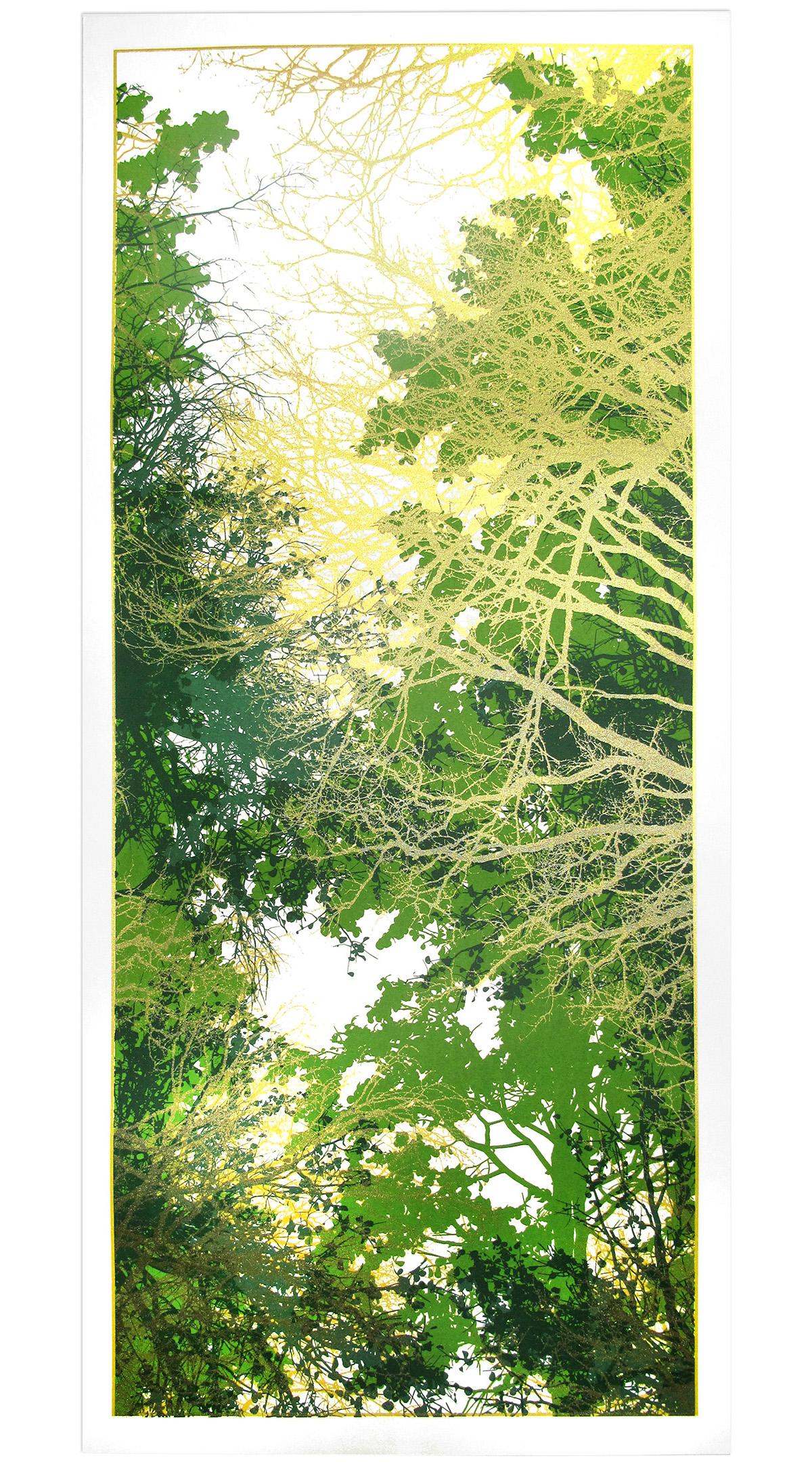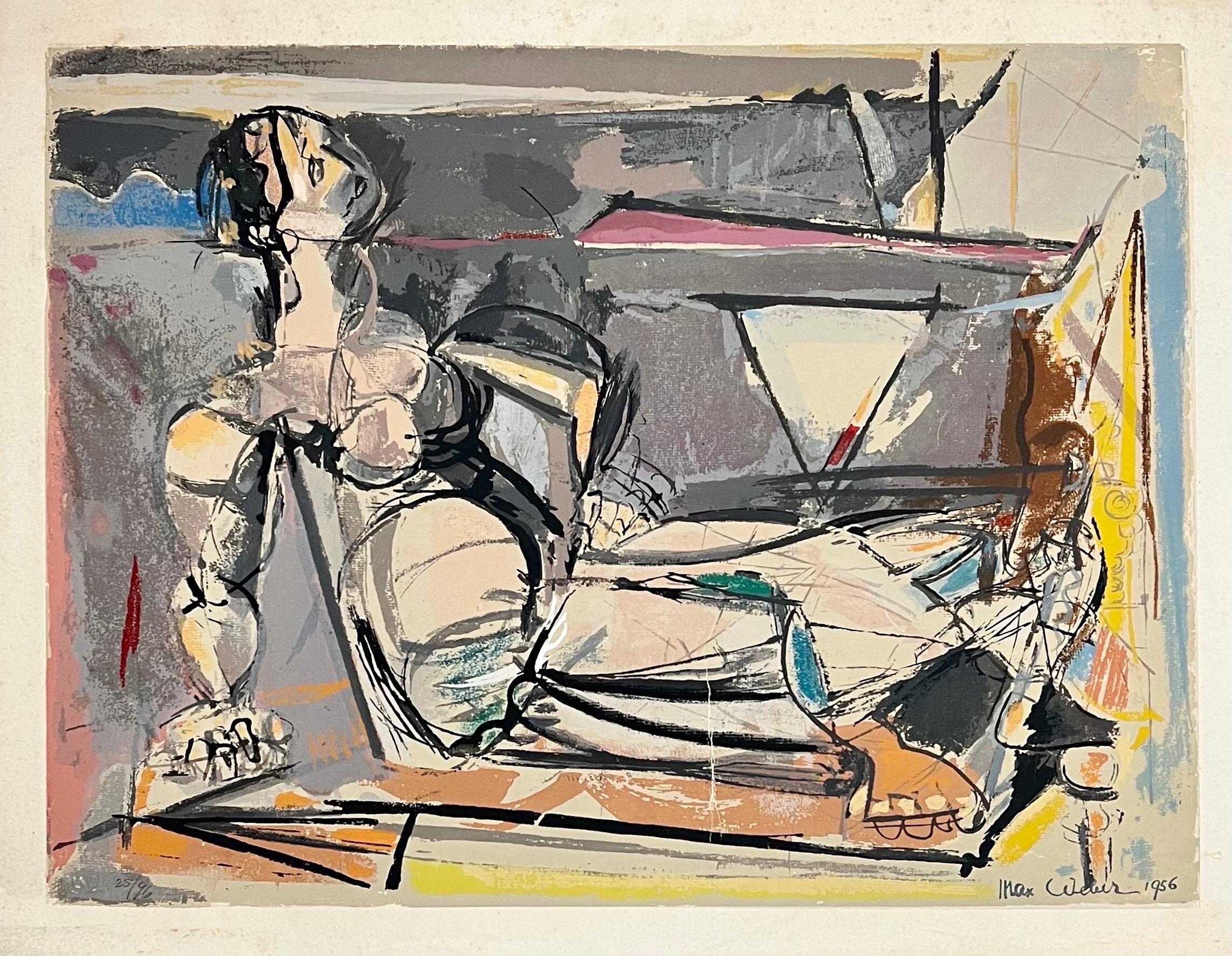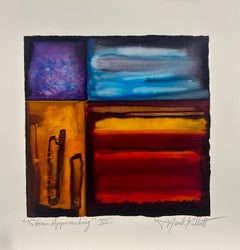Items Similar to Storm Approaching IX
Want more images or videos?
Request additional images or videos from the seller
1 of 7
Mark KellettStorm Approaching IX2007
2007
About the Item
12" x 25" Unframed
Monoprint Serigraph
Hand-signed by Mark Kellett
About the Seller
5.0
Gold Seller
Premium sellers maintaining a 4.3+ rating and 24-hour response times
Established in 1987
1stDibs seller since 2022
47 sales on 1stDibs
Typical response time: 1 hour
- ShippingRetrieving quote...Shipping from: Markham, Canada
- Return Policy
Authenticity Guarantee
In the unlikely event there’s an issue with an item’s authenticity, contact us within 1 year for a full refund. DetailsMoney-Back Guarantee
If your item is not as described, is damaged in transit, or does not arrive, contact us within 7 days for a full refund. Details24-Hour Cancellation
You have a 24-hour grace period in which to reconsider your purchase, with no questions asked.Vetted Professional Sellers
Our world-class sellers must adhere to strict standards for service and quality, maintaining the integrity of our listings.Price-Match Guarantee
If you find that a seller listed the same item for a lower price elsewhere, we’ll match it.Trusted Global Delivery
Our best-in-class carrier network provides specialized shipping options worldwide, including custom delivery.More From This Seller
View AllStars
Located in Toronto, ON
20" x 26" Unframed
Serigraph of 145 II
Hand Signed by Diana Christensen
Category
21st Century and Contemporary Abstract Prints
Materials
Screen
Hearts
Located in Toronto, ON
20" x 26" Unframed
Serigraph of 145 II
Hand Signed by Diana Christensen
Category
21st Century and Contemporary Abstract Prints
Materials
Screen
Storm Approaching XII
Located in Toronto, ON
10.5" x 10.5" Unframed
Limited Edition Serigraph of 1
Hand Signed by Mark Kellett
2007
Category
Early 2000s Abstract Prints
Materials
Screen
Storm Approaching XIV
Located in Toronto, ON
10.5" x 10.5" Unframed
Limited Edition Serigraph of 1
Hand Signed by Mark Kellett
2007
Category
Early 2000s Abstract Prints
Materials
Screen
Northern Lights II
Located in Toronto, ON
10.5" x 10.5" Unframed
Limited Edition Serigraph of 1
Hand Signed by Mark Kellett
2007
Category
Early 2000s Abstract Prints
Materials
Screen
Storm Approaching XI
Located in Toronto, ON
10.5" x 10.5" Unframed
Limited Edition Serigraph of 1
Hand Signed by Mark Kellett
2007
Category
Early 2000s Abstract Prints
Materials
Screen
You May Also Like
"Untitled"
By Tom Baldwin
Located in Surfside, FL
Recently graduated from Pasadena’s legendary Art Center College of Design, Tom Baldwin created the series of inkjet prints Japanese Gardens in 1996 on his computer, using then-nascent graphics technology to "paint" his images on the computer screen. Baldwin embraced this technology and its accompanying printing process not just for the speed and ease of their use, but because the artist could achieve the absolute flatness that the principles of modernism preached but ultimately--because of the limitations of their tools--never reached. These colorful, semi-abstracted views of Japanese temple landscapes subtly, but radically redefine picture space. Baldwin shifts fore and backgrounds, giving equal weight to skies and hillsides. Endowing a lowly bush with a vibrant purple or orange might cause it to pop out of proportion, but ultimately lends balance and stability to the work itself, in short, returning the composition to its original, harmonious whole in keeping with the subject matter. these original prints employ a color scheme that seems more reminiscent of 1980s Japanese pop art beer advertisements...
Category
20th Century Abstract Prints
Materials
Screen
"Untitled"
By Dan Reisinger
Located in Surfside, FL
Reisinger was born in Kanjiža, Serbia, into a family of painters and decorators active in Austria-Hungary and the Balkans. Most family members died in the Holocaust, including his father. As a teenager, he became active in the Partisan Pioneer Brigade and, with his mother and stepfather, immigrated to Israel in 1949. Reisinger initially lived in a transit camp and then worked as a house painter in order to earn money from almost any source. In 1950 at age 16, he was accepted as a student—its youngest up to the time—at the Bezalel Academy of Art and Design in Jerusalem, there to 1954.
During mandatory service in the Israeli Air Force from 1954, he was the art director of its books and other publications. While there, he attended a class on postage-stamp design taught by Abram Games, who became his mentor and friend. Subsequently, he traveled, studied, and worked in Europe: from 1957 in Brussels and then onto London where, 1964–66, studied stage and three-dimensional design at the Central School of Art and Design, designed posters for Britain's Royal Mail, and worked for other clients while making intermittent visits to Israel. Then in 1966, he returned permanently to Israel and established a studio in Tel Aviv and today in Giv'atayim.
His work has been included in numerous international group and one-person exhibitions. A large number of social-, political-, and cultural-theme posters and other graphic design, such as calendars, packaging, and more than 150 logos are superior to much of his fine art. He designed a new logo for El Al airlines (1972), and the 50-meter-long aluminum-cast relief (1978) of a biblical quotation in Hebrew on the exterior of the Yad Vashem, Israel's official museum/memorial to Holocaust victims, in Jerusalem. He has also designed logos for the Tel Aviv Museum of Arts, Tefen Museum of Arts, and Habima Theater (הבימה - התיאטרון הלאומי) and the symbol and posters of the 9th-15th Maccabiah Games (מַכַּבִּיָּה).
His widely published self-produced “Again?” poster (1993) features a Nazi swastika (which Reisinger incorrectly made to face left) breaks apart to 5 pointed red Star of soviet union in reference to the possible dreaded repeat of the Holocaust. The influences on his work—itself more widely focused than solely on social and political issues—have come from colorists, Minimalists, Constructivists, and humorists. He claims one of his more significant contributions has been to stretch the visual and communicative possibilities of Hebrew letters through his symbols and logos. Reisinger is one of Israel's most-accomplished graphic designers; the others include Franz Kraus...
Category
20th Century Contemporary Abstract Prints
Materials
Screen
"Untitled"
By Tom Baldwin
Located in Surfside, FL
Recently graduated from Pasadena’s legendary Art Center College of Design, Tom Baldwin created the series of inkjet prints Japanese Gardens in 1996 on his computer, using then-nascent graphics technology to "paint" his images on the computer screen. Baldwin embraced this technology and its accompanying printing process not just for the speed and ease of their use, but because the artist could achieve the absolute flatness that the principles of modernism preached but ultimately--because of the limitations of their tools--never reached. These colorful, semi-abstracted views of Japanese temple landscapes subtly, but radically redefine picture space. Baldwin shifts fore and backgrounds, giving equal weight to skies and hillsides. Endowing a lowly bush with a vibrant purple or orange might cause it to pop out of proportion, but ultimately lends balance and stability to the work itself, in short, returning the composition to its original, harmonious whole in keeping with the subject matter. these original prints employ a color scheme that seems more reminiscent of 1980s Japanese pop art beer advertisements...
Category
20th Century Abstract Prints
Materials
Screen
$1,100
Japanese Garden
By Tom Baldwin
Located in Surfside, FL
Japanese Garden: Orange, 1996
Tom Baldwin created the series of inkjet prints "Japanese Gardens" in 1996 on his computer, using then-nascent graphics tech...
Category
20th Century Abstract Prints
Materials
Screen
Gilded Forest, Chris Keegan, Landscape Art, Contemporary Art, Handmade Print
By Chris Keegan
Located in Deddington, GB
Gilded Forest [2022]
limited_edition
Screen print
Edition number 50
Image size: H:56 cm x W:25 cm
Complete Size of Unframed Work: H:56 cm x W:25 cm x D:0.1cm
Sold Unframed
Please no...
Category
21st Century and Contemporary Contemporary Landscape Prints
Materials
Paper, Screen
American Modernist Cubist Lithograph Screenprint "Reclining Woman" Max Weber
By Max Weber
Located in Surfside, FL
Reclining Cubist Nude Woman
Max Weber (April 18, 1881 – October 4, 1961) was a Jewish-American painter and one of the first American Cubist painters who, in later life, turned to more figurative Jewish themes in his art. He is best known today for Chinese Restaurant (1915), in the collection of the Whitney Museum of American Art, "the finest canvas of his Cubist phase," in the words of art historian Avis Berman.
Born in the Polish city of Białystok, then part of the Russian Empire, Weber emigrated to the United States and settled in Brooklyn with his Orthodox Jewish parents at the age of ten. He studied art at the Pratt Institute in Brooklyn under Arthur Wesley Dow. Dow was a fortunate early influence on Weber as he was an "enlightened and vital teacher" in a time of conservative art instruction, a man who was interested in new approaches to creating art. Dow had met Paul Gauguin in Pont-Aven, was a devoted student of Japanese art, and defended the advanced modernist painting and sculpture he saw at the Armory Show in New York in 1913.
In 1905, after teaching in Virginia and Minnesota, Weber had saved enough money to travel to Europe, where he studied at the Académie Julian in Paris and acquainted himself with the work of such modernists as Henri Rousseau (who became a good friend), Henri Matisse, Pablo Picasso, and other members of the School of Paris. His friends among fellow Americans included some equally adventurous young painters, such as Abraham Walkowitz, H. Lyman Sayen, and Patrick Henry Bruce. Avant-garde France in the years immediately before World War I was fertile and welcoming territory for Weber, then in his early twenties. He arrived in Paris in time to see a major Cézanne exhibition, meet the poet Guillaume Apollinaire, frequent Gertrude Stein's salon, and enroll in classes in Matisse's private "Academie." Rousseau gave him some of his works; others, Weber purchased. He was responsible for Rousseau's first exhibition in the United States.
In 1909 he returned to New York and helped to introduce Cubism to America. He is now considered one of the most significant early American Cubists, but the reception his work received in New York at the time was profoundly discouraging. Critical response to his paintings in a 1911 show at the 291 gallery, run by Alfred Stieglitz, was an occasion for "one of the most merciless critical whippings that any artist has received in America." The reviews were "of an almost hysterical violence." He was attacked for his "brutal, vulgar, and unnecessary art license." Even a critic who usually tried to be sympathetic to new art, James Gibbons Huneker, protested that the artist's clever technique had left viewers with no real picture and made use of the adage, "The operation was successful, but the patient died."[8] As art historian Sam Hunter wrote, "Weber's wistful, tentative Cubism provided the philistine press with their first solid target prior to the Armory Show."
The Cellist...
Category
Mid-20th Century Cubist Abstract Prints
Materials
Screen



